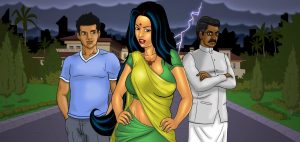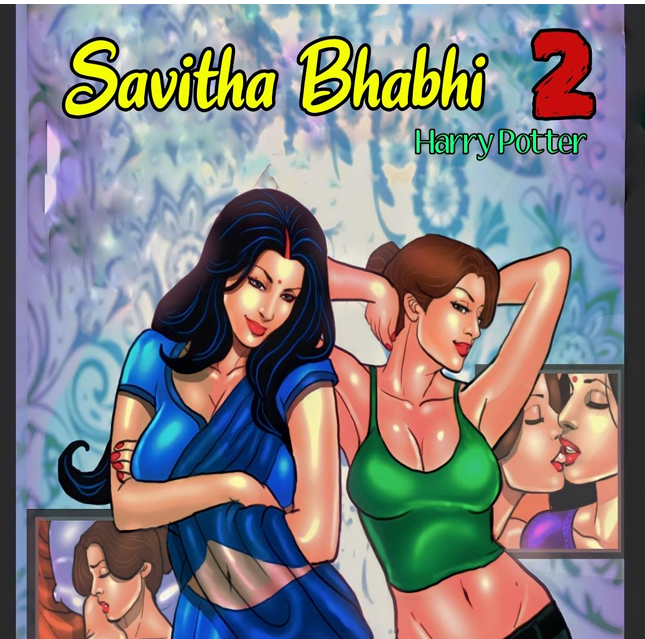In the vibrant and complex tapestry of Indian pop culture, few phenomena have stirred as much controversy and fascination as Savita Bhabhi, a pornographic comic character who has become a cultural lightning rod since her debut in 2008. Created by Kirtu Comics, Savita Bhabhi is a fictional Indian housewife whose explicit adventures challenge traditional norms of sexuality, gender, and morality in a country known for its conservative social fabric. This article delves into three scholarly works that analyze Savita Bhabhi’s cultural significance: Rethinking Gujarati Identity through the Image of Savita Bhabhi by Anannya Bohidar, Law, Desire and Pop Culture; Savita Bhabhi’s Sexuality by Manvendra Gaur (2016), and Transgressions in Toonland: Savita Bhabhi, Velamma and the Indian Adult Comic (2019). Through these lenses, we explore how Savita Bhabhi reflects and reshapes Indian pop culture, sexuality, and societal norms, offering insights into a nation grappling with modernity, tradition, and taboo.
The Cultural Context of Savita Bhabhi
India’s cultural landscape is a paradox of progress and restraint. While Bollywood films, television serials, and digital media celebrate modernity, they often operate within the boundaries of societal expectations around family, gender roles, and morality. Savita Bhabhi, however, subverts these norms by presenting a hyper-sexualized Indian housewife who engages in extramarital affairs with unabashed agency. Her popularity, despite censorship attempts, underscores a latent desire for narratives that challenge the status quo.Anannya Bohidar’s Rethinking Gujarati Identity through the Image of Savita Bhabhi situates the character within the context of Gujarati identity, a community often stereotyped as entrepreneurial and family-oriented. Bohidar argues that Savita Bhabhi “is a product of the socio-cultural milieu of Gujarat, reflecting both the region’s economic vibrancy and its conservative undercurrents” (Bohidar, n.d.). The comic’s setting-a middle-class Indian household-mirrors the joint family dynamics prevalent in Gujarati culture, yet its explicit content disrupts the idealized image of the dutiful bhabhi (sister-in-law), a revered figure in Indian households. Bohidar suggests that Savita’s character draws from “the everyday realities of Gujarati lifestyle, where modernity and tradition coexist uneasily” (Bohidar, n.d.), positioning her as a satirical commentary on societal hypocrisy.Manvendra Gaur’s Law, Desire and Pop Culture; Savita Bhabhi’s Sexuality (2016) takes a broader view, framing Savita Bhabhi as a critique of India’s patriarchal structures. Gaur notes that “Savita Bhabhi’s sexuality is a rebellion against the societal constructs that confine women to roles of chastity and domesticity” (Gaur, 2016). By comparing her to historical texts like the Kamasutra and contemporary Bollywood narratives, Gaur highlights how Savita’s overt sexual agency challenges the sanitized depictions of female desire in mainstream media. The paper argues that her popularity reflects “a growing undercurrent of sexual liberation in a society bound by rigid moral codes” (Gaur, 2016).The 2019 paper, Transgressions in Toonland: Savita Bhabhi, Velamma and the Indian Adult Comic, further contextualizes Savita within India’s underground comic culture.

The authors describe Savita Bhabhi and her counterpart Velamma as “sticky objects-cultural artifacts that attract and repel, embodying societal tensions around sexuality, class, and gender” (2019). Unlike mainstream media, these comics thrive in the digital realm, evading censorship through internet distribution. The paper emphasizes that “the Indian adult comic offers a space for fantasies that are otherwise suppressed in public discourse” (2019), making Savita a symbol of resistance against moral policing.
Savita Bhabhi and Indian Pop Culture
Indian pop culture is a dynamic interplay of tradition and modernity, where media like Bollywood, television serials, and now digital platforms shape societal narratives. Savita Bhabhi, as a digital comic, occupies a unique niche. Unlike Bollywood’s veiled sensuality or television’s family-centric dramas, Savita’s stories are unapologetically explicit, catering to a growing online audience seeking alternative narratives. Bohidar observes that “Savita Bhabhi’s popularity stems from her ability to juxtapose the familiar tropes of Indian daily soaps—joint families, domestic settings—with subversive sexual narratives” (Bohidar, n.d.). This blending of the familiar with the taboo makes her a compelling figure in pop culture.The comic’s aesthetic draws heavily from Indian visual culture. Savita’s saree-clad image, a nod to traditional Indian femininity, contrasts sharply with her sexual escapades, creating a provocative dichotomy. Bohidar notes that “the visual representation of Savita Bhabhi borrows from the iconography of Indian cinema and advertising, where women are often objectified yet idealized” (Bohidar, n.d.). This duality allows the comic to resonate with audiences familiar with Bollywood’s sensuous item numbers while pushing boundaries further.

Gaur’s analysis situates Savita within a lineage of Indian cultural texts that explore sexuality, from the Kamasutra to contemporary erotica. He argues that “Savita Bhabhi is not an anomaly but part of a continuum of Indian narratives that negotiate desire within societal constraints” (Gaur, 2016).
Unlike the Kamasutra, which was a scholarly treatise, or Bollywood’s coy depictions of romance, Savita’s stories are accessible and populist, reflecting the democratization of sexual discourse in the digital age. Gaur highlights that “her appeal lies in her relatability-a middle-class woman navigating desire in a familiar Indian setting” (Gaur, 2016).The Transgressions in Toonland paper underscores the role of digital platforms in amplifying Savita’s reach. The authors note that “the internet has allowed Indian adult comics to bypass traditional censorship, creating a parallel pop culture that thrives on transgression” (2019). This digital rebellion mirrors broader trends in Indian pop culture, where platforms like Netflix and YouTube offer content that challenges conventional norms. Savita Bhabhi, alongside Velamma, represents a countercultural movement that speaks to a digitally savvy audience seeking unfiltered expressions of desire.
Sexuality and Gender Dynamics
Savita Bhabhi’s overt sexuality is central to her cultural significance. In a society where female sexuality is often policed, her character embodies a radical departure from the norm. Gaur argues that “Savita Bhabhi’s unapologetic pursuit of pleasure challenges the patriarchal notion that women’s sexuality must be confined to marriage and procreation” (Gaur, 2016). Her affairs with neighbors, colleagues, and even relatives subvert the sanctity of the Indian family, a cornerstone of societal norms. Yet, her portrayal as a desirable, middle-class housewife makes her rebellion palatable to audiences who might otherwise reject such narratives.
Bohidar’s analysis highlights the gendered implications of Savita’s character within the Gujarati context. She notes that “Savita Bhabhi’s depiction as a Gujarati housewife taps into stereotypes of the community’s women as both alluring and dutiful, creating a tension that fuels her appeal” (Bohidar, n.d.). This tension reflects broader societal debates about women’s roles in modern India, where economic empowerment and education coexist with expectations of domesticity. Savita’s ability to navigate these roles—housewife by day, seductress by choice—makes her a complex figure in the discourse on gender.
The Transgressions in Toonland paper explores how Savita and Velamma challenge class and gender hierarchies. The authors argue that “these comics depict women who wield sexual power across social strata, from servants to elites, disrupting traditional power dynamics” (2019). Unlike mainstream media, which often reinforces class and gender norms, these comics offer fantasies where women exercise agency, albeit within a problematic framework of objectification. The paper notes that “Savita’s interactions with lower-class characters, like servants, highlight a class fluidity that is rare in Indian pop culture” (2019).
However, Savita’s portrayal is not without critique. Gaur points out that “while Savita Bhabhi empowers female sexuality, she is still a product of the male gaze, crafted primarily for male consumption” (Gaur, 2016). This paradox—empowerment within objectification—mirrors broader tensions in Indian society, where women’s liberation is often framed within patriarchal structures. The comic’s reliance on stereotypes, such as the hyper-sexualized housewife, raises questions about whether it truly subverts norms or reinforces them in a new guise.
Societal Norms and Censorship
Savita Bhabhi’s existence is a direct challenge to India’s conservative societal norms. The comic’s explicit content led to its ban in India in 2009 under the Information Technology Act, citing obscenity. Yet, its continued popularity through VPNs and mirror sites underscores the limits of censorship in the digital age. The Transgressions in Toonland paper argues that “Savita Bhabhi’s resilience against censorship reflects a broader societal shift toward embracing suppressed desires” (2019). The internet, as a decentralized platform, has enabled creators to evade moral policing, creating a space for alternative narratives.
Gaur’s paper situates this censorship within India’s legal and cultural framework. He notes that “India’s laws on obscenity, rooted in colonial-era morality, struggle to regulate digital content that transcends borders” (Gaur, 2016). Savita Bhabhi’s ban, he argues, is less about her content and more about the threat she poses to patriarchal control over sexuality. Gaur connects her censorship to broader debates about sexual rights, noting that “the same legal system that bans Savita Bhabhi has gradually recognized rights for homosexuals and third-gender individuals, revealing a society in flux” (Gaur, 2016).
Bohidar’s analysis frames the censorship debate within the Gujarati context, where community pride and moral conservatism are strong. She observes that “Savita Bhabhi’s portrayal as a Gujarati woman provoked outrage among community leaders, who saw it as an affront to their cultural identity” (Bohidar, n.d.). Yet, her popularity among Gujarati readers suggests a disconnect between public morality and private desires. This hypocrisy, Bohidar argues, is central to Savita’s appeal: “She exposes the contradictions of a society that outwardly condemns sexuality but privately consumes it” (Bohidar, n.d.).
Comparative Insights and Broader Implications
The three papers collectively paint Savita Bhabhi as a multifaceted cultural artifact. Bohidar’s focus on Gujarati identity highlights how regional stereotypes shape and are shaped by pop culture. Gaur’s legal and feminist perspective underscores the comic’s role in challenging patriarchal norms, while the Transgressions in Toonland paper emphasizes its digital subversion of censorship and class boundaries. Together, they reveal Savita Bhabhi as a mirror to India’s evolving relationship with sexuality, gender, and modernity.
In comparison to other Indian media, Savita Bhabhi stands out for its explicitness and accessibility. Bollywood films, while increasingly bold, remain bound by censor board restrictions. Television serials, with their focus on family values, rarely explore female desire. Digital platforms like Netflix offer more freedom, but their content is often aimed at urban elites. Savita Bhabhi, by contrast, is a grassroots phenomenon, accessible to anyone with an internet connection. As the Transgressions in Toonland paper notes, “the Indian adult comic fills a gap left by mainstream media, offering a space for fantasies that are both local and transgressive” (2019).
The character also reflects broader global trends in digital pop culture. Like Western adult comics or Japanese hentai, Savita Bhabhi leverages the internet to reach niche audiences. However, her Indian context—rooted in specific cultural, regional, and legal dynamics—makes her unique. Gaur argues that “Savita Bhabhi is a global product with a distinctly Indian flavor, blending universal desires with local sensibilities” (Gaur, 2016).
Savita Bhabhi is more than a pornographic comic; she is a cultural phenomenon that encapsulates India’s complex relationship with sexuality, gender, and societal norms. As Bohidar, Gaur, and the Transgressions in Toonland authors demonstrate, she is a lens through which to view the tensions between tradition and modernity, public morality and private desire, and censorship and freedom. Her enduring popularity, despite legal bans, speaks to a society navigating rapid social change. By challenging patriarchal norms, exposing cultural hypocrisies, and thriving in the digital underground, Savita Bhabhi has carved out a space in Indian pop culture that is as provocative as it is revealing. As India continues to grapple with its sexual and cultural identity, Savita remains a bold, if controversial, symbol of liberation and transgression.
Also read this story related to Savita Bhabhi
The Rise of Savita Bhabhi in the Social Media Age and the Potential of the Adult Comics Industry
The Rise of Savita Bhabhi in the Social Media Age and the Potential of the Adult Comics Industry





